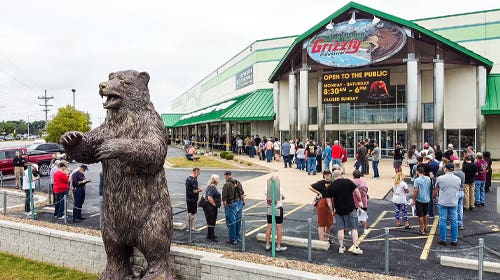Walnut remains ‘white hot’
Cutting to the chase, Eastern black walnut (Juglans nigra) in an immensely popular domestic hardwood.
Cutting to the chase, Eastern black walnut (Juglans nigra) in an immensely popular domestic hardwood. With all the interesting live-edge table projects piquing consumer interest, along with architectural and furniture projects making use of this rich brown North American species, it seems everybody is jumping into the game. All suppliers and producers interviewed by Woodshop News confirmed sales are thriving, no matter what facet of the market they cater to.
At Pike Lumber Co. in Akron, Ind., a manufacturer of kiln-dried hardwood lumber, executive vice president Craig Brouyette says walnut is clearly one of the company’s most popular choices.
“We produce walnut lumber in 4/4 through 12/4 thicknesses. We operate our own steam vats and dry kilns. All of our walnut lumber is sold steamed and kiln-dried. We are a wholesale distributor and our walnut customers prefer to have all of their walnut lumber steamed,” says Brouyette.
“We ship our walnut lumber coast to coast in the U.S., as well as export to Asia, Europe, Canada, Central America, and the Middle East. Our walnut customers consist primarily of distribution yards, furniture manufacturers, flooring manufacturers and high-end millwork shops. We do not see walnut demand declining. We see it only increasing. It is a beautiful wood with dark, rich color. It is hard to substitute for walnut. We believe walnut will remain a very popular species for the foreseeable future.”
Rick Hearne of Hearne Hardwoods in Oxford, Pa., offers thicknesses of 4/4 to 16/4, and boards over 6’ wide and up to 18’ long. The company prepares about 95 percent of its walnut unsteamed.
“Walnut is white hot right now. Our customers tend to favor the unsteamed walnut because it has a lot more life to it. You get beige, red, gold, purples instead of one color, which is why bigger manufacturers don’t want it because everything needs to match,” says Hearne.
He brings up a harsh reality, however, that the species is at risk. The species is stricken with widespread Thousand Cankers Disease, carried by the walnut twig beetle.
“Thousand Cankers Disease is sweeping across the country. It started in its native Southwest and never use to travel because of cold winters up here but with the climate change it’s now found on the East and West coasts,” Hearne says.
“There are professionals saying walnuts will be gone in 20 years. I’m told a single piece of firewood can have thousands of these beetles on it. The problem is it’s very hard to spray for the beetle because it puts humans at risk.”
Bruce Stevens of Highland Hardwoods, a retailer and wholesaler of steamed walnut in Brentwood, N.H., says the market is as strong as it has ever been.
“Walnut continues to be in demand and due to somewhat limited supply, prices are staying up and probably increasing all the time,” says Stevens.
“Live edge is a very miniscule part of the market for us. We sell a little bit of 2” live sawn, but live edge is more of a specialty wood for artsy projects. A fair amount of walnut is used for flooring today – that’s where half of ours goes, and the other half is for general architectural woodworking.”
As for veneers, David Thomsson of Brookside Veneers in Cranbury, N.J., also endorses walnut as a popular choice.
“On the sales side, there is no slackening in demand for walnut. At the higher end of the market where we are, sales are strong for both quartered and flat cut walnut. We have been in this design trend for several years and I don’t see any change in the near future,” says Thomsson.
This article originally appeared in the August 2018 issue.







